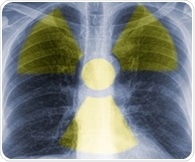
|
|
|
| |

|
|
| |
The latest radiology news from News Medical |
|
|
|
|  | | | | |  Global nuclear medicine organizations unite to standardize quantitative PET imaging Global nuclear medicine organizations unite to standardize quantitative PET imaging Three world-leading nuclear medicine organizations--the SNMMI Clinical Trials Network (SNMMI-CTN), the Australasian Radiopharmaceutical Trials Network (ARTnet), and the European Association of Nuclear Medicine Forschungs GmbH (EARL)--have jointly endorsed a unified PET/CT and PET/MR scanner accreditation framework to standardize and harmonize quantitative PET imaging worldwide. | |  | | | | | New ultrasound method accurately distinguishes fluid from solid breast masses New ultrasound technology developed at Johns Hopkins can distinguish fluid from solid breast masses with near perfect accuracy, an advance that could save patients, especially those with dense breast tissue, from unnecessary follow-up exams, painful procedures and anxiety. | |
|
|
|  | | |  A new study published today in The Lancet showed a significant survival benefit for patients with oropharyngeal cancers who were treated with proton therapy (IMPT) compared to those treated with traditional radiation therapy (IMRT). A new study published today in The Lancet showed a significant survival benefit for patients with oropharyngeal cancers who were treated with proton therapy (IMPT) compared to those treated with traditional radiation therapy (IMRT). | | | | | Patients with stage 1 or 2, hormone receptor (HR)-negative breast cancer had similar five-year rates of locoregional recurrence whether or not they underwent preoperative breast magnetic resonance imaging (MRI) in addition to diagnostic mammography to determine the extent of their cancer, according to results from the phase III Alliance A011104/ACRIN 6694 clinical trial presented at the San Antonio Breast Cancer Symposium (SABCS), held December... | | | | | Researchers at the Technical University of Munich (TUM) and the Friedrich-Alexander-University Erlangen-Nuremberg (FAU) found that an increased fMRI signal is associated with reduced brain activity in around 40 percent of cases. | |
|
|
|
|
|
|
|